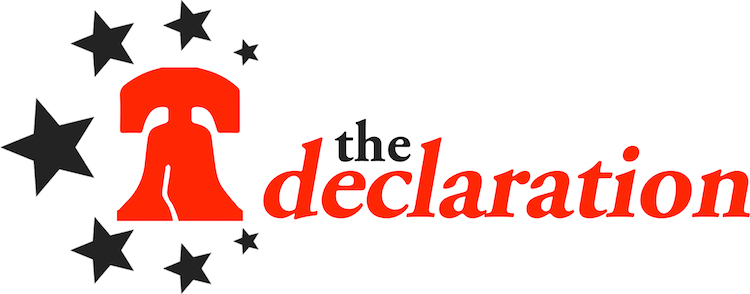By Matt Albasi and Jack Grauer
So, journalist. You covered the 2016 Democratic National Convention. The three-month Secret Service background check rattled you. But you got your quotes, filed your story and that was it. Right? Nope.
They sent you home with a gift. It’s in your ID badge. If you rip it open, you’ll find a radio-frequency identification (RFID) tag. It looks like this:

Photo: Matt Albasi
The Declaration spoke with several journalists who covered the convention. None knew of the chips. A delegate granted floor access at the convention allowed us to dissect the access credentials given to them. We found no RFID tag inside.
The Secret Service confirmed that press credentials during this year’s two major political conventions
“contained RFID chips. The [Service] did issue credentials to delegates that required access to certain secure areas, but not all delegates… The delegate credentials were issued by [the Democratic National Convention Committee] and [the Republican Committee on Arrangements].”
In a recent ABC News report, the Service discussed their use of RFID tags at these events.
The tags enabled officials to identify attendees automatically and before they approached checkpoints, according to the report. The Service referred The Declaration to ABC’s piece and opted not to elaborate.

Democratic National Convention staff during the convention restricted media and delegates to specific areas of the Wells Fargo Center in accordance with the color-code pictured here.
Electronic Frontier Foundation Investigative Researcher David Maass considers this type of RFID tagging “commonplace these days for better or worse.”
The Foundation has “had issues with RFID chips in general,” Maass said. “It’s not a particularly secure technology.”
How do these things work? RFID “tags” have two parts: antennae and chips. The gray and white part visible in the pictures are the antenna, similar to ones on cellphones. The antenna connects to a microchip about the size of a deer tick, which stores information.
“Reader” devices hit the tags with radio waves. The chips respond by spitting back the information stored in their memory. It’s not new technology. But it gets applied in new ways constantly.
People who study bees now use RFID tags to document their mating habits. American Apparel uses them to deter theft. The Secret Service has used the technology for “asset tracking” since at least 2006, according to a trade journal article published that year.
The government put RFID-bugged bracelets on political arrestees during the 2012 Tampa Republican National Convention. According to a press release, the
“Hillsborough Co. Sheriff’s Office, in coordination with the Tampa Police Department, deployed the system throughout the city. The Arrestee Management System went to work as soon as law enforcement fitted a suspect with an RFID wristband. Using a rugged mobile computer equipped with an integrated RFID reader and digital camera, deputies quickly captured a wide range of data about each suspect, including a photograph, personal demographic and arresting information, property information, and more. All individual data, including transport activities, welfare checks and detainee requests, automatically synchronized in real time and made instantly accessible via web-based software so that command staff could securely monitor operational performance from any location on any device at any time.”
The tag we found in our ID badge was made by a Scandinavian company called Smartrac. It uses a UCode 7 chipset designed by NXP, another Scandinavian company.
Ucode 7s hold 128 bits of information: enough to store about eight characters. The tag could in other words identify the wearer as something like “#7092m1j4.”
Consumer-grade RFID readers can collect and store concise location and movement information. Security systems often combine RFID, global positioning, closed-circuit audio and video technologies.
The Secret Service would’ve needed high budget, sci-fi grade satellite gear to track RFID-bugged journalists from space. But the market-grade, stationary readers pictured in ABC’s report, handheld readers and reader-equipped drones would be quite capable of the same.
See below for photos of drones The Declaration took during a gated, pre-convention tour, facing away from the Wells Fargo Center toward Broad Street.

Photo: Jack Grauer, July 22nd.

Photo: Jack Grauer, July 22nd.
The Federal Aviation Administration banned civilian drone flights within 30 miles of the Wells Fargo Center between July 25th and 29th during the convention proper.
It’s hardly news that the federal government tracks media. Declassified documents show that the FBI and CIA have for decades kept dossiers on journalists and monitored national political conventions.
Why then should anyone other than journalists and those already critical of government surveillance care specifically that the Secret Service used RFID to track media during the 2016 conventions?
We’ll have a better response to that question once we know more specifics about what RFID reader hardware the Secret Service used. We’ve requested information to this end and will update this story if/as it becomes available.
